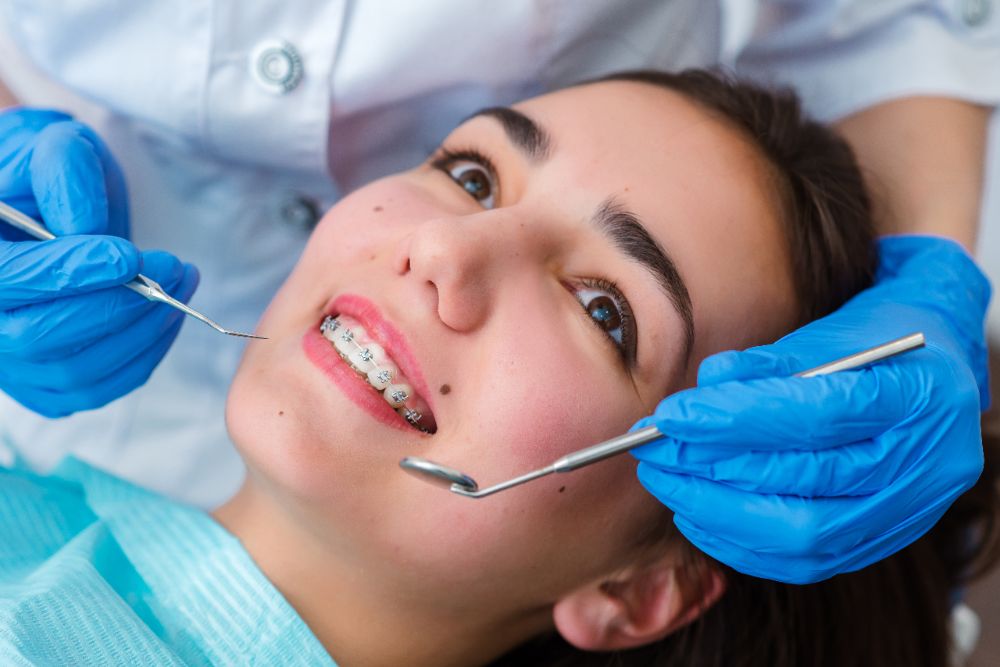The Advantages of Choosing a Cumming Orthodontist for Your Braces and Aligners
The Advantages of Choosing a Cumming Orthodontist for Your Braces and Aligners
Blog Article
Comprehensive Guide to Orthodontics Treatments for Correcting Oral Imbalances
Understanding the ins and outs of each procedure, including their devices, advantages, and possible drawbacks, is important in making educated decisions about one's orthodontic treatment. As we browse through the thorough overview to orthodontic treatments for correcting oral imbalances, the intricate information of each technique will unfold, dropping light on the course towards a practical and harmonious oral placement.
Orthodontic Procedures Review

Along with clear aligners and traditional braces, orthodontists might also suggest other treatments like headgear, palatal expanders, or retainers to deal with particular alignment issues (invisalign). These procedures are tailored per patient's special requirements and may involve a mix of therapies to accomplish the preferred results. Regular changes and surveillance are essential parts of orthodontic therapy to ensure progression is on track and to make any type of required alterations along the road. By going through orthodontic procedures, people can not just accomplish a straighter smile yet additionally improve their general oral health and wellness and function.
Typical Braces: How They Function
When taking into consideration orthodontic therapies for oral imbalances, traditional braces stand out as a time-tested method for fixing teeth placing. Conventional braces are composed of brackets, wires, and bands that function together to apply continual stress on the teeth, slowly moving them into the desired placement.
One trick element of just how standard braces work is the process of bone renovation. As pressure is applied to the teeth with the dental braces, the bone surrounding the teeth is reshaped to sustain the new tooth placements. This remodeling is crucial for the long-lasting stability of the remedied alignment. Patients will require routine adjustments at the orthodontist's office to make certain the braces remain to use the proper stress for reliable teeth activity.
Invisible Aligners: Disadvantages and pros
These clear, customized trays are practically unnoticeable when worn, making them an appealing choice for people seeking a more visually pleasing orthodontic therapy. Clients can get rid of the aligners before eating or brushing their teeth, reducing the risk of food obtaining stuck in the home appliance and simplifying the cleaning process.

Surgical Orthodontic Options
Surgical treatments in orthodontics present feasible alternatives for dealing with complicated dental imbalances that may not be efficiently settled with standard orthodontic treatments. While typical dental braces and undetectable aligners can remedy numerous orthodontic problems, certain cases require medical intervention to achieve optimal outcomes. Surgical orthodontic choices are normally suggested for severe malocclusions, significant jaw discrepancies, and situations where the underlying bone structure requires modification to achieve proper alignment.
One common medical orthodontic procedure is orthognathic surgery, which includes repositioning the jaws to deal with practical issues such as trouble talking or eating. This surgical treatment is often done in cooperation with an orthodontist who Homepage helps align the teeth prior to and after the treatment. Surgical orthodontics may additionally entail treatments to expose influenced teeth, get rid of excess periodontal cells, or improve the jawbone to develop a much more unified facial account.
Prior to thinking about medical orthodontic choices, individuals go through a detailed analysis to establish the necessity and possible advantages of such treatments. cumming invisalign. While surgical treatment may appear difficult, it can dramatically enhance both the feature and aesthetics of the smile in situations where traditional orthodontic therapies fail
Retainers and Post-Treatment Care

Post-treatment care entails adhering to the orthodontist's guidelines carefully. This may include appropriate oral hygiene practices, participating in follow-up appointments, and using the retainers as recommended. Failing to abide by post-treatment care instructions can result in relapse, where the teeth progressively return in the direction of their original settings. Constant retainer wear, excellent dental hygiene, and regular oral examinations are crucial for keeping the outcomes accomplished with orthodontic surgical procedure and making sure the lasting stability of the dealt with dental positioning.
Conclusion
Finally, orthodontic procedures use numerous options for dealing with dental imbalances. Standard dental braces use metal brackets and wires to move teeth into appropriate placement. Invisible aligners offer an even more discreet alternative however might not appropriate for all instances. Surgical orthodontic alternatives are offered for extra serious imbalances. Retainers are frequently utilized post-treatment to maintain the brand-new placement. Generally, orthodontic procedures can properly boost dental health and visual appearance.
As we navigate through the detailed overview to orthodontic procedures for pop over to this web-site remedying dental imbalances, the elaborate details of each approach will certainly unravel, shedding light on the path towards a practical and unified dental placement. - aligners
One of the most common orthodontic therapies is the use of dental braces, which consist of steel braces and cables that apply gentle pressure to gradually move teeth right into the preferred position.When considering orthodontic treatments for dental imbalances, traditional dental braces stand out as a click to read reliable method for remedying teeth placing. In addition, unnoticeable aligners may not be suitable for intricate orthodontic problems that need more considerable teeth movement, as they are generally advised for mild to modest cases. Retainers are tailor-made orthodontic gadgets designed to hold teeth in their corrected settings after the conclusion of orthodontic therapy.
Report this page